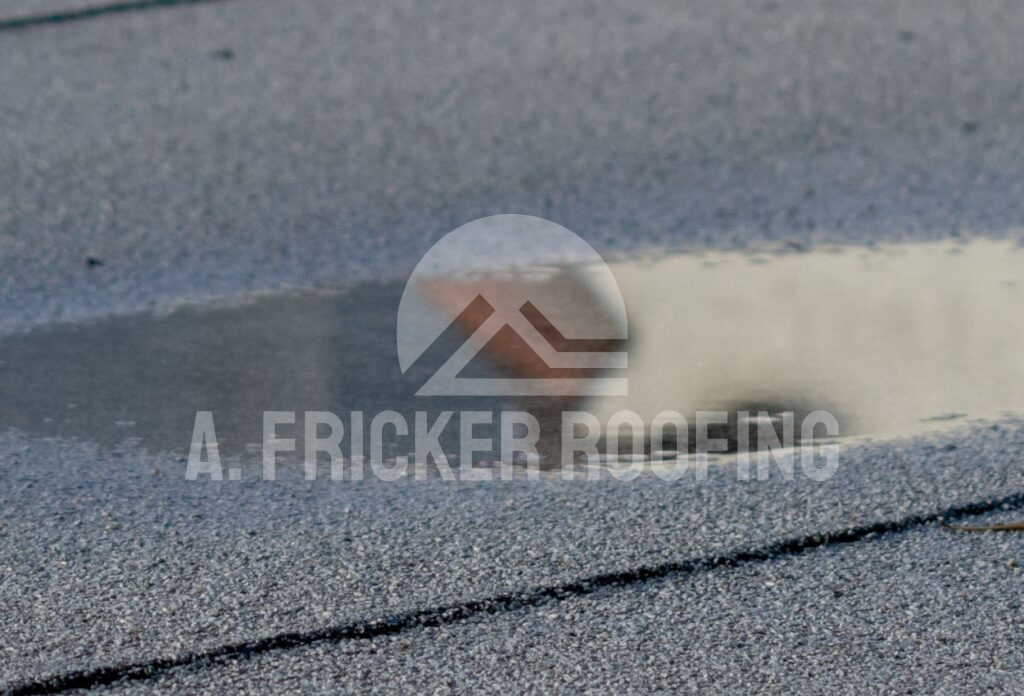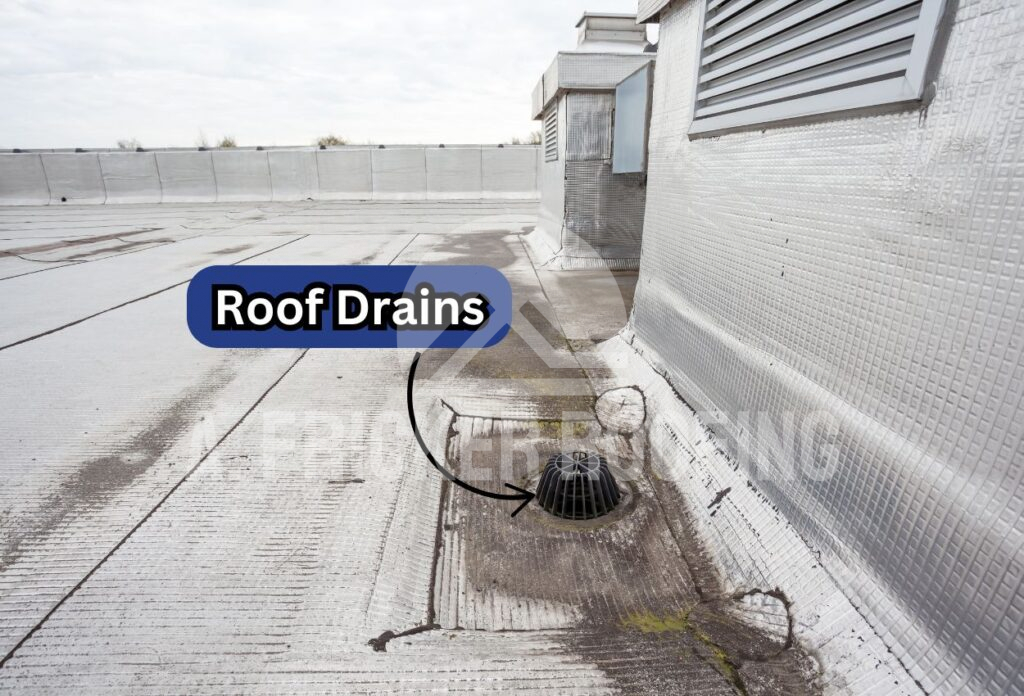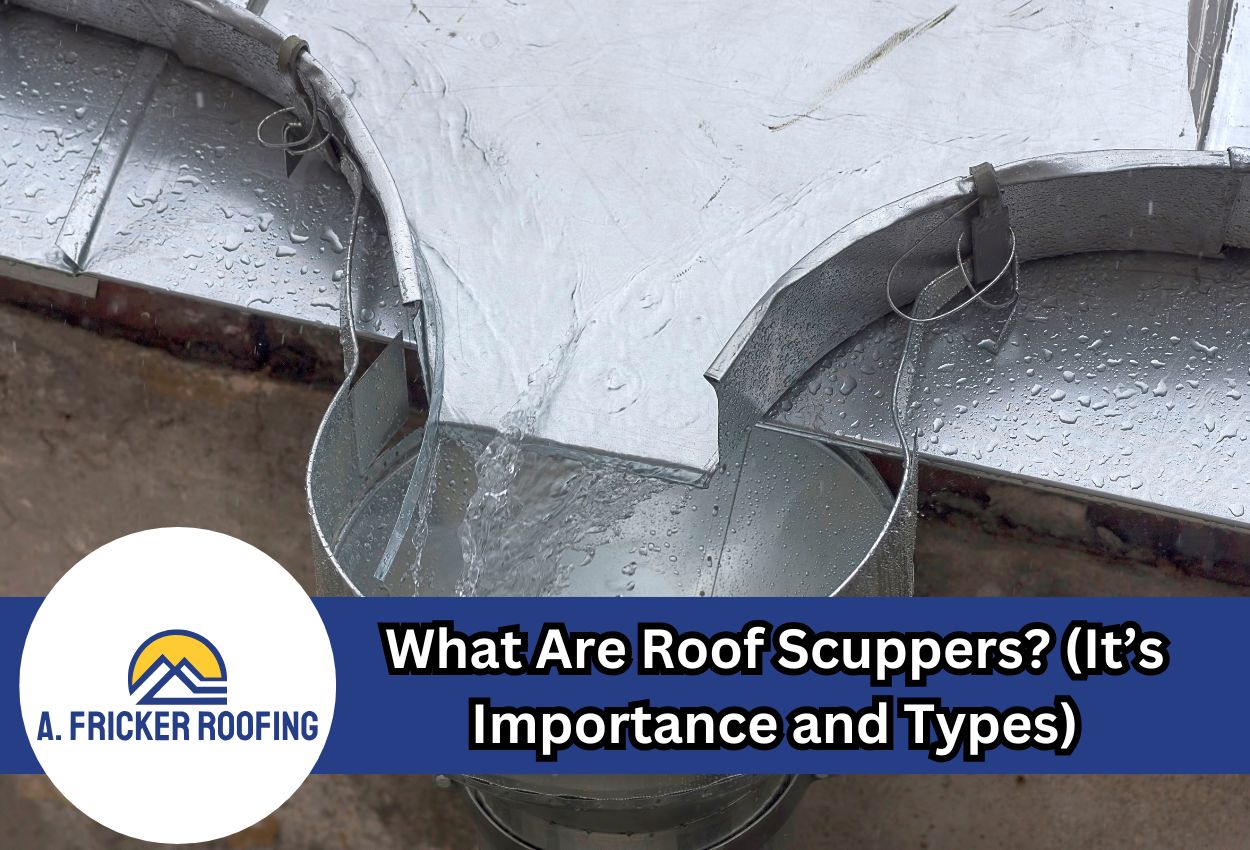If you own or manage a building with a flat or low-slope roof, chances are you’ve heard the term “roof scuppers.” Maybe you’re familiar with them, or perhaps it’s one of those things you’ve seen but never really thought about. Either way, knowing what roof scuppers are and the role they play in protecting your flat roof is important.
Today, we will talk about this small component that is a big part of flat roof drainage. We discuss its types, advantages, and comparisons with roof drains.
What Are Roof Scuppers?
Oklahoma’s climate presents specific challenges for roofing, particularly in regions prone to heavy rainfall and severe thunderstorms. The state’s unpredictable weather patterns, with intense spring and summer storms, can take a toll on your roof. This is especially true for flat roofs, which are more vulnerable to water ponding.
When it rains for hours (and it does in Oklahoma!), your flat roof has an increased risk of ponding water. This can lead to leaks and other issues.
Fortunately, there’s a solution that turns this challenge into a manageable system. Enter roof scuppers: the heroes of flat roof drainage.
A roof scupper is an opening or outlet built into the sidewalls or edges of a flat or low-slope roof. Its job? To allow water to flow off the roof and away from the building. In a basic sense, scuppers are a kind of gateway that lets rainwater drain so it doesn’t pool on your roof.
Scuppers are typically paired with downspouts or splash blocks that help guide water further away from the foundation. Without this system, you’d run the risk of water accumulating and damaging your roof or, worse, leaking into your building’s interior.
Why Are Roof Scuppers Important?
You might be thinking, “Do I really need scuppers? Can’t the water just run off naturally?” Here’s why scuppers are critical:
Prevents Water Pooling

Ponding water is one of the leading causes of roof damage on flat and low-slope roofs. Scuppers make sure rainwater doesn’t sit around too long, reducing the risk of leaks, mold, and roof membrane damage.
Protects Your Building Structure
Water that isn’t drained properly can seep into your roof structure, walls, and foundation. Over time, this causes cracks, rot, and interior damage, all of which can be expensive to fix. Scuppers help avoid this by efficiently diverting water away.
Cost-Effective Drainage Solution
Compared to some other roof drainage systems, scuppers are relatively simple to install and maintain. They don’t involve complex piping systems, which makes them a budget-friendly option in many cases.
Extends Roof Lifespan
The longer the water stays on your roof the more damage it can do to your roofing material. By reducing the load of standing water, scuppers help prolong the life of your roof. This is especially important for roofs in areas with heavy rainfall or melting snow.
In short, scuppers are a small addition to your roofing system with a big impact. They keep your roof healthy, your building safe, and your maintenance costs down.
Types of Roof Scuppers
Now that you know why scuppers matter, here are some different types you might encounter. While they all serve the same basic purpose, the design and installation can vary depending on your building and roofing needs.
Through-Wall Scuppers
These are the most common type of scuppers. Through-wall scuppers are openings built into the parapet walls or perimeter walls of a roof. They are often rectangular or square and are designed to allow water to exit the roof directly.
Best for: Flat or low-slope roofs with general drainage needs.
Parapet Wall Scuppers
Parapet roof scuppers are installed specifically at the base of parapet walls. They’re very similar to through-wall scuppers but are designed to work seamlessly with parapet structures. Often, they’ll include a spout or extension to direct water further out and away from the building’s walls.
Best for: Flat roofs surrounded by parapet walls that need targeted water drainage.
Gutter-Connected Scuppers
Yes, your scuppers can work with the gutter systems too. In this design, scuppers are connected to a gutter system. Instead of water flowing freely off the roof edge, it’s channeled into gutters, which guide it toward downspouts and away from the foundation.
Best for: Buildings where water needs to be managed more precisely, especially near entrances or pathways.
Overflow Scuppers
Overflow scuppers act as a backup drainage system. Also known as emergency roof scuppers, these are installed slightly higher on the roof walls, providing an emergency outlet if the primary drainage system (like roof drains) gets blocked.
Best for: Roofs prone to heavy rainfall or buildings with high-value interiors that need extra protection.
Roof Scuppers vs. Roof Drains

As a flat roof owner, you know that roof drains are important and are likely the primary source of diverting away from your flat roof. But if you’re considering roof drainage options, you might wonder how scuppers compare to roof drains. Let’s break down roof drains and scuppers:
Design and Placement
- Roof Scuppers are openings in walls or roof edges. They’re visible and often simple to install.
- Roof Drains are typically installed on the surface of the roof itself and connect to an internal piping system that directs water away.
Cost
- Scuppers are generally more affordable because they don’t require complex internal plumbing.
- Roof Drains are more expensive due to the added cost of piping, maintenance, and labor for installation.
Effectiveness
- Scuppers work well for roofs with parapet walls and areas where water can drain off freely.
- Roof Drains are better for larger roofs or buildings where water needs to be directed internally and away from walkways or entrances.
Note: You don’t necessarily need to choose between roof scuppers and drains. In fact, in most cases, both drains and scuppers need to be installed as they complement each other.
How Large Do My Roof Scuppers Need To Be?
The size of your roof scuppers needs to be considered because getting it wrong can lead to serious drainage problems. If scuppers are too small, they won’t be able to handle heavy rain or melting snow, causing water to back up and pool on your flat roof.
To determine the right size, you’ll need to consider the total square footage of your roof, the average rainfall in your area, and the slope (or lack thereof) of your roof. As a general rule, larger scuppers are better for flat roofs since they can handle greater volumes of water more efficiently. Most building codes recommend that scuppers be at least 4 inches high and wide, but this can vary depending on your roof’s needs.
Flat Roofing Experts In Oklahoma!
Roof scuppers may not be the flashiest part of your building, but they play a critical role in protecting your roof and structure. They efficiently remove water, prevent expensive damage, and extend your roof’s lifespan.
If you need flat roofing services, look no further than the team of A. Fricker Roofing and Waterproofing. We are a premier roofing team serving Tulsa and the nearby areas in Oklahoma. Whether you need flat roof repair or want to replace your flat roof, we can help. Contact us today at (918) 402-7167 to learn more.

